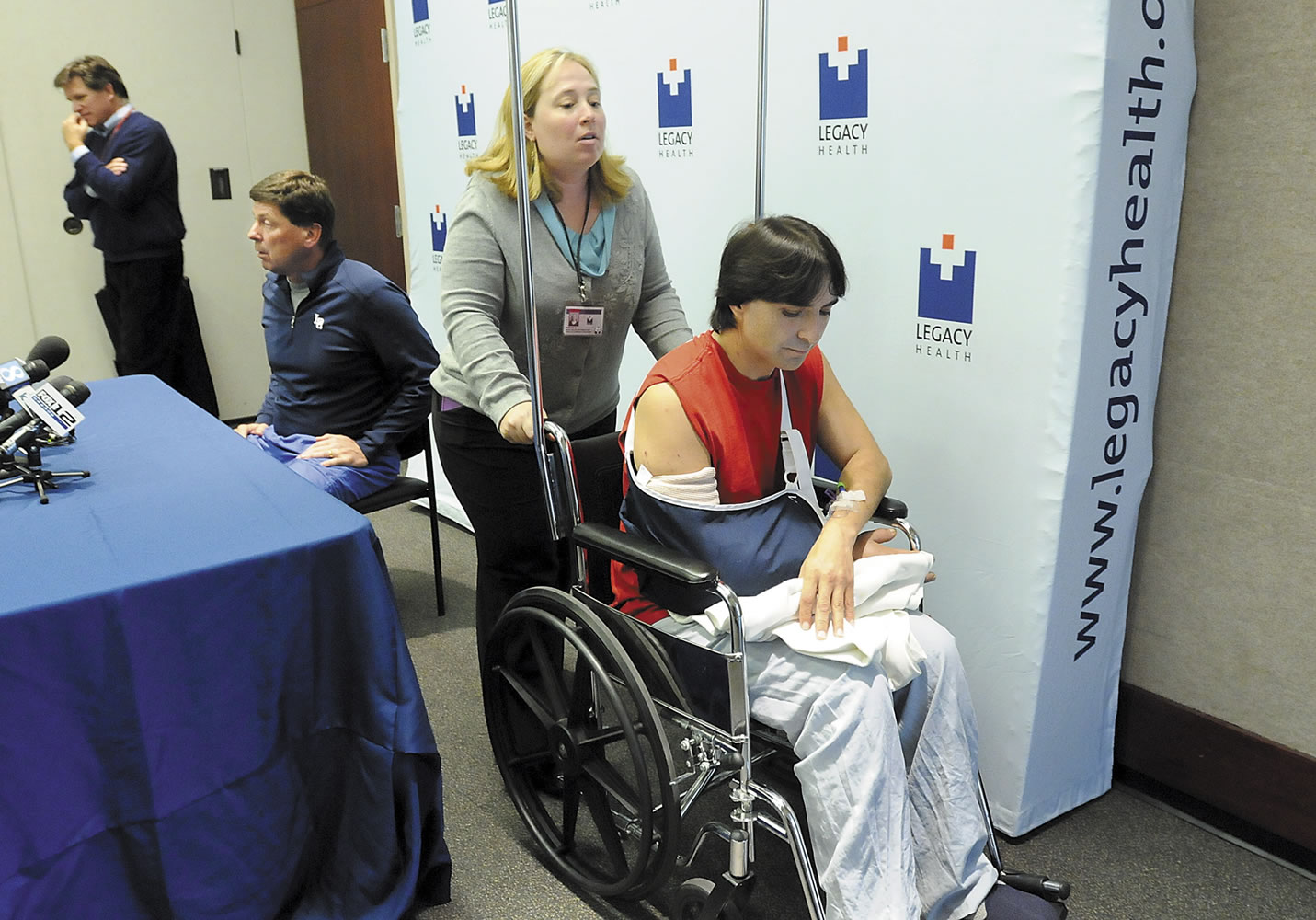PORTLAND — The moment he realized he had sliced his right arm off with a hula saw, sawmill worker Jesse Gonzalez knew he didn’t have time to panic.
“I felt a sting and then when I looked at my arm, I noticed it was gone and I immediately left the area to find help,” he said.
The 40-year-old Albany resident was working at Mary’s River Lumber Co.’s fence plant in Philomath on Oct. 22 when his arm was severed at the elbow.
His co-workers acted fast, Gonzalez said.
One of them, Tony Kill-gore, applied a tourniquet to stop the bleeding. Someone else retrieved his arm. Philomath Fire Department medics arrived within minutes, and a REACH helicopter flew Gonzalez to Legacy Emanuel Medical Center in Portland.
The magnitude of what had happened only began to sink in as he rode in the helicopter.
“I think the shock started settling in as far as my arm is severed off,” he said. “I think I started to be a little bit upset with myself.”
As soon as he arrived in Portland, he was prepped for surgery.
“The most important thing is the time it takes to get (the arm) back on,” his surgeon, Dr. Steven Madey, said Tuesday. “So everyone moved real quick. He got to the hospital within an hour of losing his arm. That’s a big deal because he’s not around the corner.”
Gonzalez and his surgeon spoke about the ordeal at a press conference at the medical center on Tuesday, eight days after the accident. It will take six months to a year for the nerves in his arm to regenerate, but his surgeon is optimistic that he will eventually regain at least some sensation and the ability to use his fingers.
Surgeons had to sequentially sew and assemble all parts of his arm back together, Madey said, starting with the arteries and veins and moving on to the bones, nerves, muscles and, lastly, the skin.
The most important first step, threading the arteries back together in order to allow the blood to flow, took about 30 minutes.
“The clock is ticking whenever you lose a body part,” Madey said. “Sort of the magic number is six hours to get the blood flowing again, but the faster you get the blood flowing, the better it is. We had Jesse’s blood flowing about two hours from the time the arm came off.”
The rest of the surgery lasted an additional three hours.
“First you’re stitching arteries,” Madey said, “then you’re using plates and screws to put bones back together, then you’re stitching again — you’re stitching nerves using the microscope, then you’re stitching muscles and then you’re eventually stitching skin.”
Surgeons had to reconstruct Gonzalez’s elbow.
“There are a couple of pieces missing,” Madey said. “I actually have to go back in next week or the week after to clean up a little here and there, but the majority of it is done.”
The nerves are housed in a cable that is about the size of a pencil, Madey said.
“Within the actual cable, there are thousands, if not tens of thousands, of nerves that are running through that,” he said. “So you just hook the cables back together and let the body take care of the rest.”
From beginning to end, Madey estimates that 20 to 30 people helped in Gonzalez’s surgery.
Gonzalez’s ability to cope with the accident impressed his surgeon.
“I don’t know Jesse that well — I’ve operated on him and seen him on rounds — but I can tell you he’s a very tough individual,” Madey said. “I can tell by the way someone reacts to what’s going on. It’s very traumatic, it’s shocking. He’s handled it unbelievably well through this point.”



